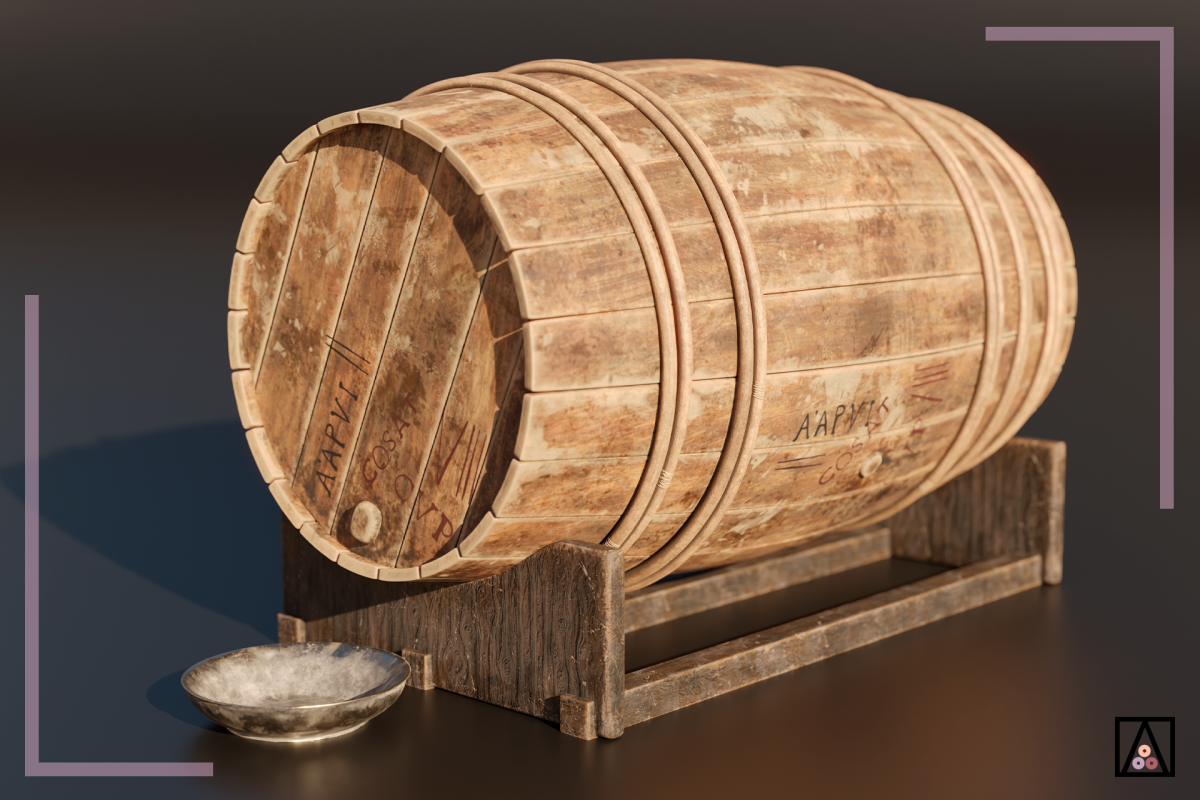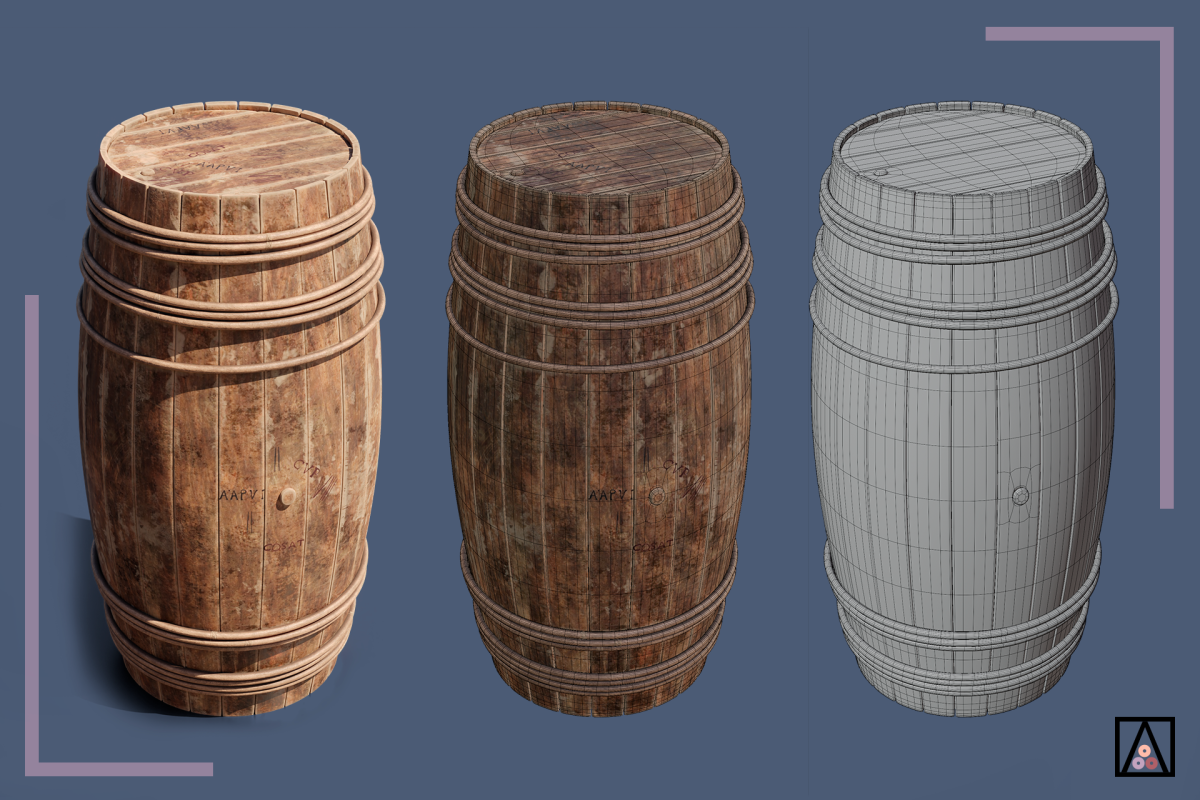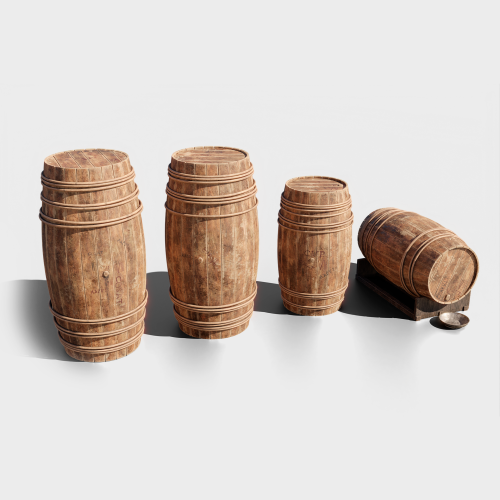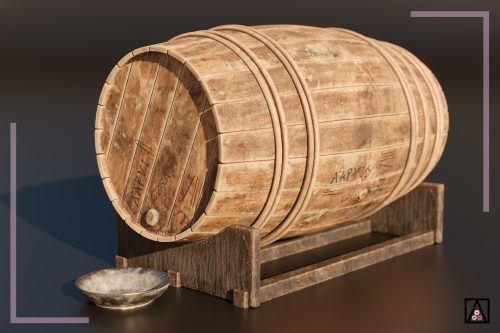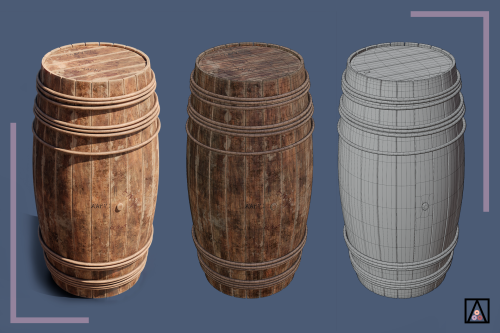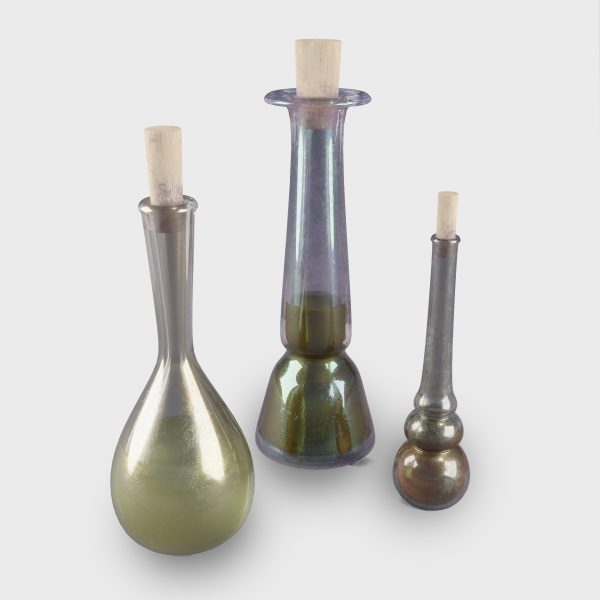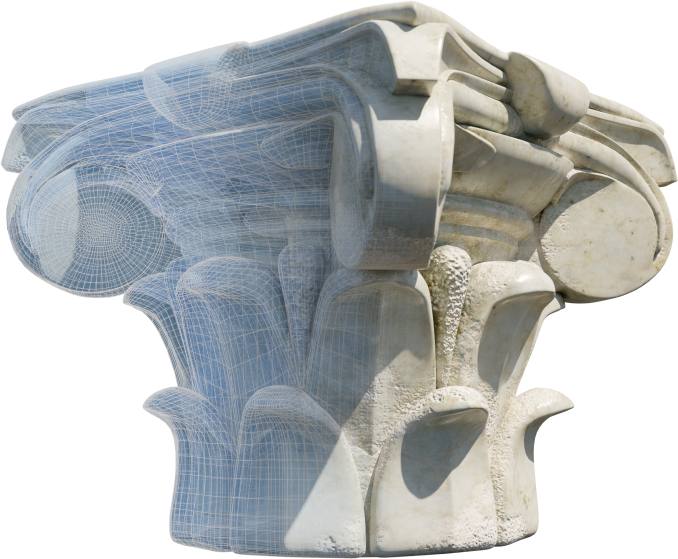The barrels were containers used to transport food and other substances, such as wine or oil. Normally these barrels were made of oak or European spruce, while the rings that surround them and close the staves by tying with cords could be made of hazelnut, esparto grass or fir. These barrels used to be sealed with pitch and could be made up of between 22 to 25 two-meter-long staves, with capacities of up to 1,200 liters. Most of these barrels were covered with all sorts of markings and stamps that were made by the makers as well as by the owners. In this way, the manufacturers of the staves marked them, thus establishing their quality, the cooper who assembled them left another type of seal, like the wine merchant who owned the barrels, who was obliged to mark the corks once the barrel was filled, as in this case with the mark “COSAT”.
LOD0: 396K Poly / 792K Tris
LOD1: 99K Poly / 198K Tris
LOD2: 57K Poly / 59K Tris
LOD3: 17K Poly / 17K Tris
Game Ready Model
Formats: .FBX; .OBJ; .blend.
PBR materials (JPG/PNG)
Texture maps: Base Color, Normal Map, Metallic, Roughness, AO, Height.
Texture resolution: 1K, 2K and 4K.
Rigged: No
Animated: No
Mask for color alternatives: No
BRUN, J.P. (2005) : "Archéologie du vin et de l’huile en Gaule romaine", Errance, Paris. P. 273.
MILLE, P. y ROLLET, P. (2020): "Étude de trois grands tonneaux mis au jour à Reims/Durocortorum (Marne) : le savoir-faire des tonneliers antiques". Gallia. Archéologie des Gaules. 77.2. Paris. Pp. 123-155.
Articles about the discovery of barrels from Roman times in Reims:
https://journals.openedition.org/gallia/5242#tocto3n14
https://vinepair.com/booze-news/ancient-wine-barrels-champagne/


